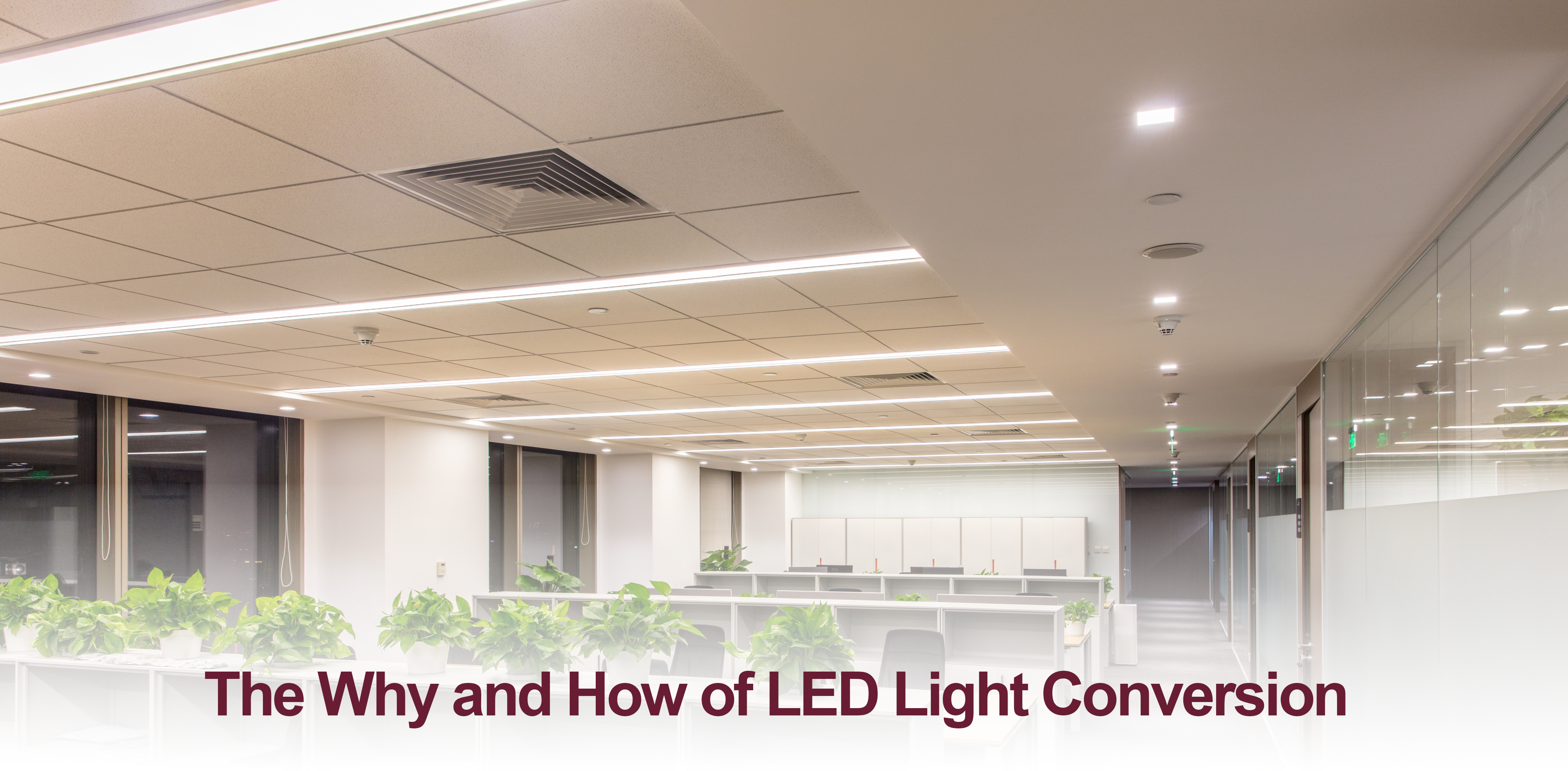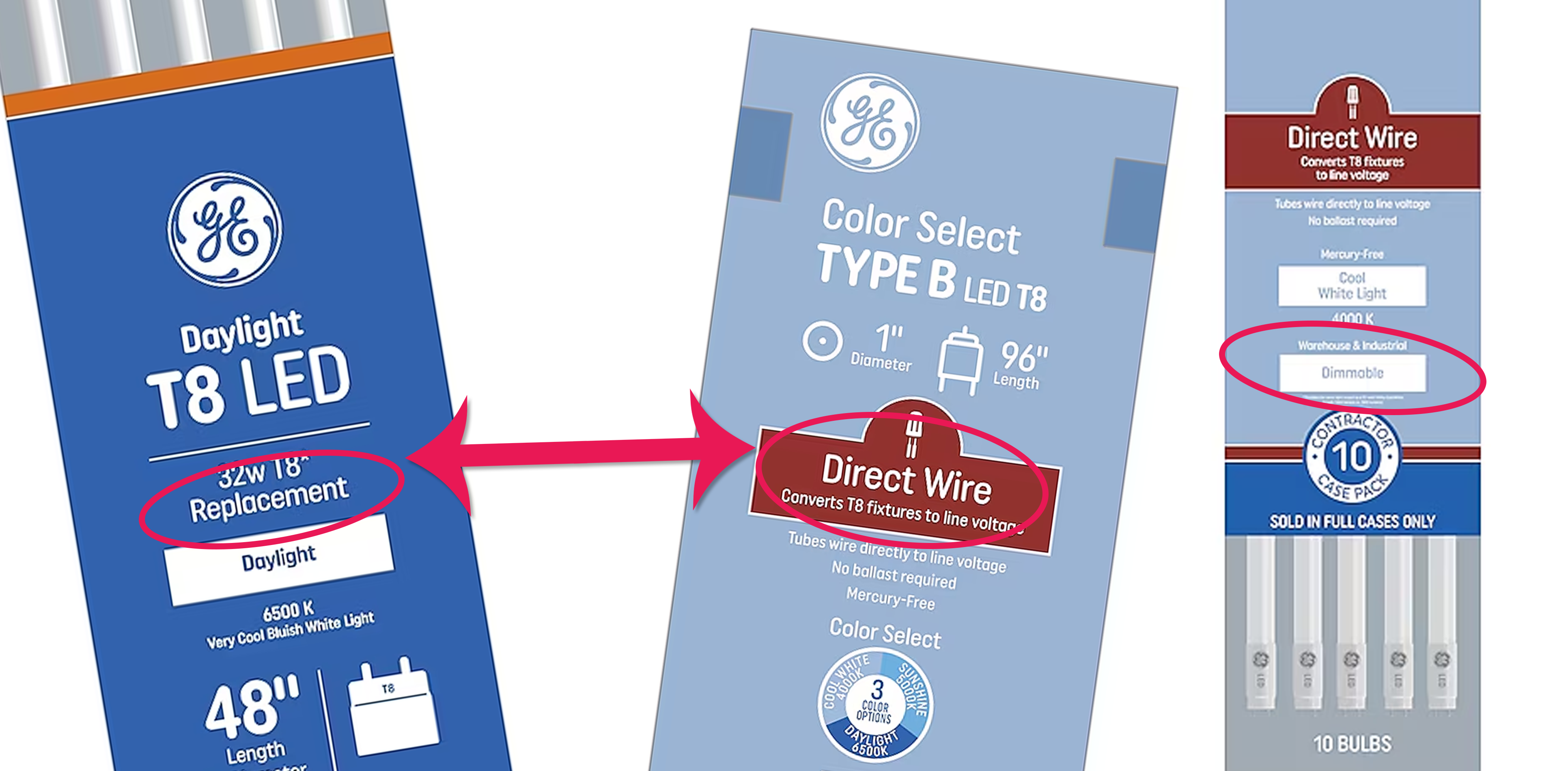
The benefits of converting your lighting to LED, as opposed to fluorescent, CFL, or halogen lights, are tremendous. All types of lights can be converted to LEDs, even parking lot lights. Whether your motivation is simply about cost, or you have deeper concerns about environmental issues, converting to LED lights makes sense.
The Why
Cost and Energy Efficiency
The cost of LED bulbs and fixtures may be a little higher up front, but the overall cost savings over time is much greater and offsets that initial investment. As time goes on, and technology improves, that initial cost difference continues to lessen. LEDs are estimated to use up to 90% less energy and last up to 25 times longer than traditional bulbs. (Department of Energy) The ways in which using LEDs save you money are significant:
- Lower energy consumption means lower electric bill
- Longer life span means not having to replace the bulbs as frequently
- Reduced heat output means lower heating and cooling costs
- Tax rebates are sometimes offered when you convert
Environmental Concerns
The use of LEDs ticks several boxes in the environmental column as well. Their energy efficiency means a smaller carbon footprint, but their construction also contributes. LEDs contain no mercury and are made from non-toxic materials. When it comes time to change the bulbs, many of the components can be recycled.
Take a look at Carbon Switch for instructions on how to estimate your energy and cost savings by switching to LEDs.
Mood and Function
One of the great advantages of LEDs is that they come in a variety of color temperatures, with some bulbs even being capable of switching between various temperatures to create more versatile spaces. You may want a different kind of light if you are working than if you are sitting down for dinner. Variable temperature LEDs allow you to use the same space for both and change the lighting to fit your needs at that particular moment. Below is a guide on how different color temperatures look in the same space. (Philips Lighting)

The How
Now that you know why you should convert to LED lights, how should you accomplish that? Fortunately, there are several methods for converting to LED lights, all with different price points and things to consider in your specific situation.
Conversion Option 1: Replacement bulbs/tubes
The quickest and easiest way to switch to LED lights is to simply buy LED Replacement bulbs or tubes for your existing fixtures. They come in a variety of color temperatures, and may have other features like being dimmable. Typically, if you purchase an LED Replacement light, it needs to specify that it is dimmable on the packaging or it may not function correctly when hooked to a dimmer switch.
Conversion Option 2: Direct Wired Fixture
If you currently have tube light fixtures, you may want to have your electrician or handyman direct wire the fixture. This eliminates the ballast entirely and saves you having to replace the ballast and/or the whole fixture if that component goes out. When purchasing tubes for this type of option, they must specify that they are Direct Wire tubes. As with other options, these will come in a variety of colors and options.

Conversion Option 3: Magnetic LED Light Strips
This solution is similar to direct wiring in that it eliminates the ballast, but instead of wiring to each of the tombstones at either end of the tube, you only have to connect to one place on the strip. The Magnetic LED strip then adheres to the metal housing of the fixture.
Conversion Option 4: Fixture Replacement
While this option does have the highest up front cost, it also has the most flexibility. Since you’re replacing the whole fixture, you can choose any style or color you want to fit your space. Some options are made to drop right in to your existing ceiling grid, others attach on top of the surface, and there are a wide range of decorative options for a less commercial feel.
Conclusion
Regardless of why you are considering conversion, or how you go about it, taking the step of converting to LED lights is definitely worth the investment. You will see many benefits both financially and in the way you use your spaces!
